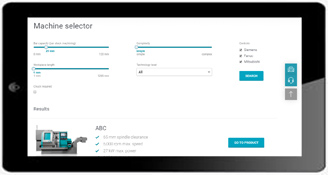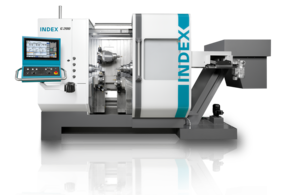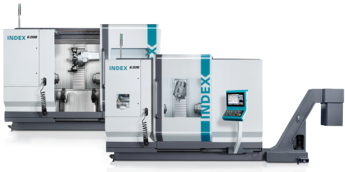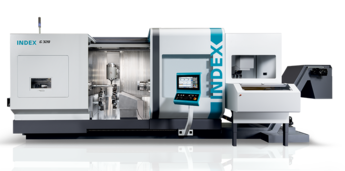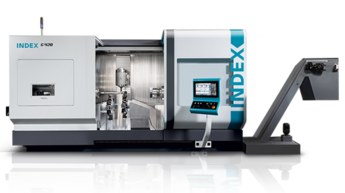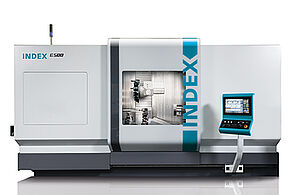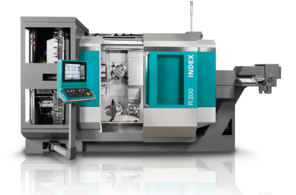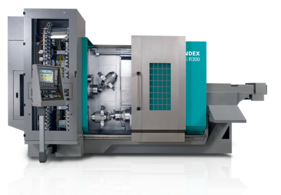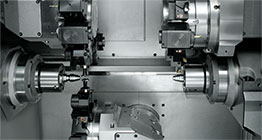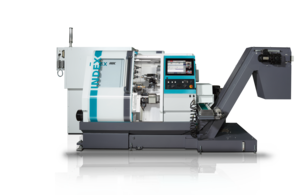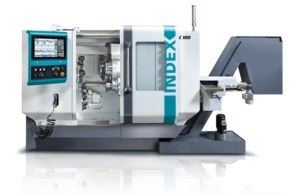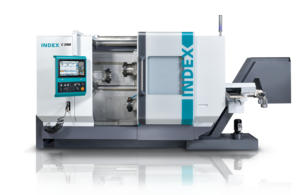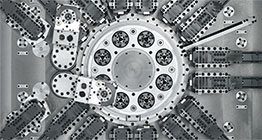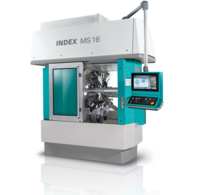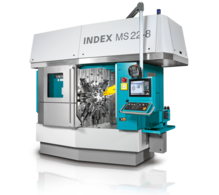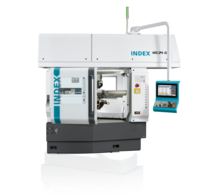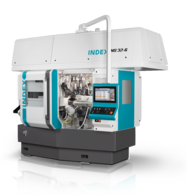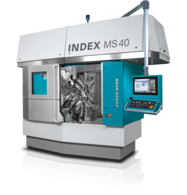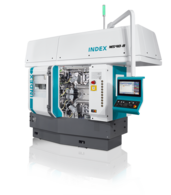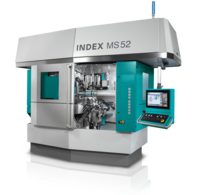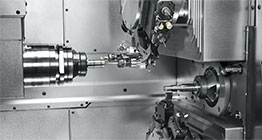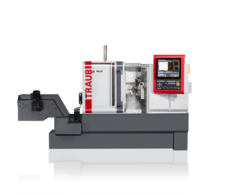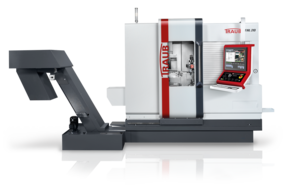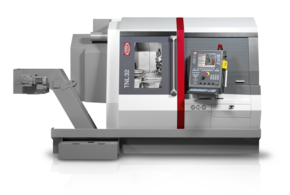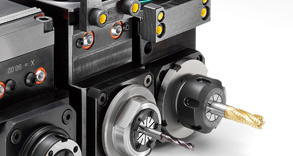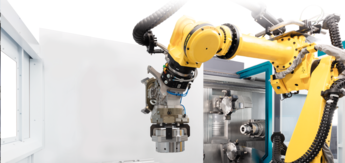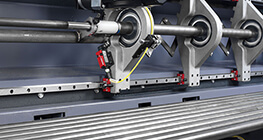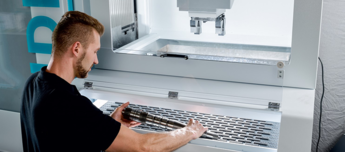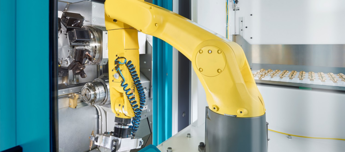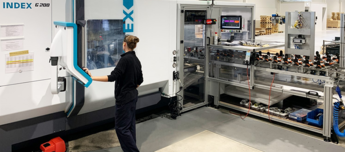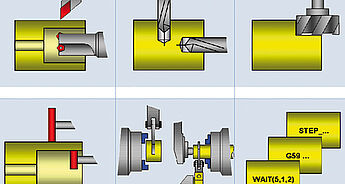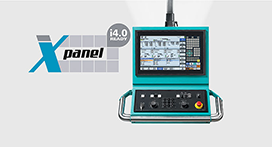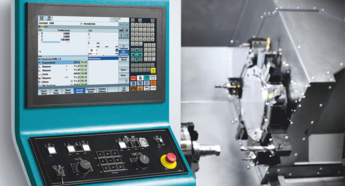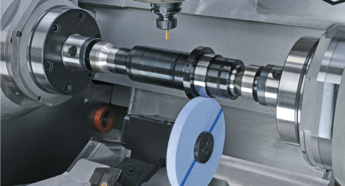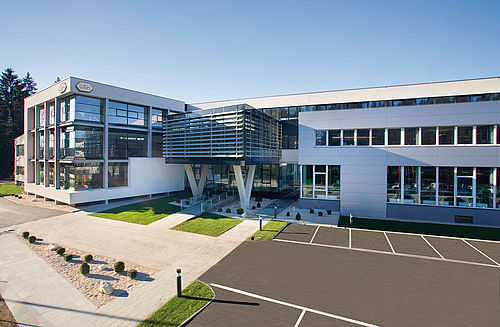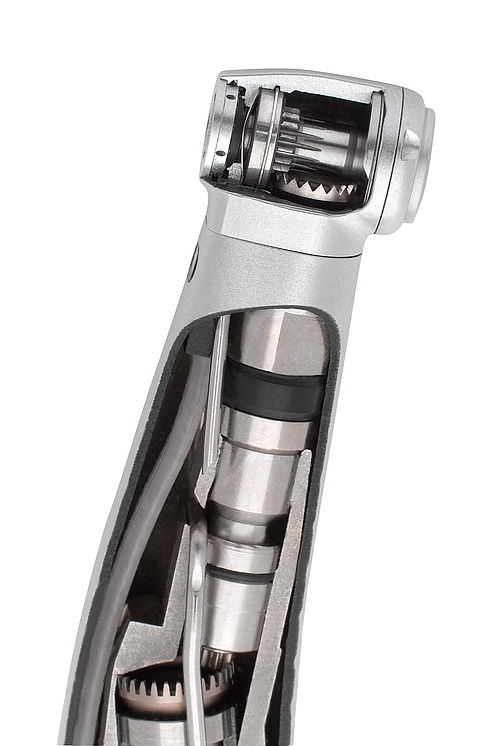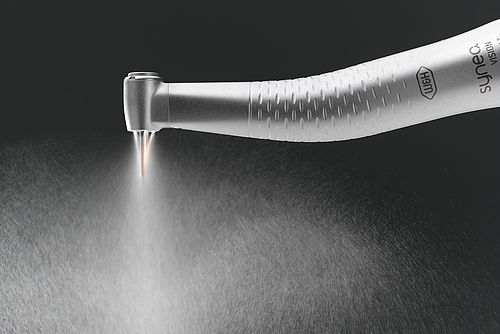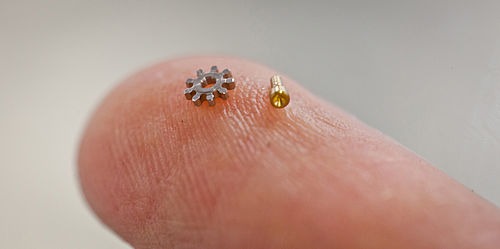Teamwork for world leader
W&H is one of the leading manufacturers of dental precision instruments and devices. Important success factors include product innovations as well as an innovative business structure with teamwork and a day portion model. The highly qualified employees have access to a fleet of machines that enable the manufacture of highly integrated components.
The first thing that visitors notice at W&H Dentalwerk in the Austrian town of Bürmoos near Salzburg is the open and friendly atmosphere. The modern and bright architecture predominantly made of glass highlights that this is a special industrial operation. The W&H Group continues to be a hugely successful developer and producer of dental precision devices and instruments. The company that was founded in 1890 in Berlin and moved to Bürmoos in 1944 has been under the ownership of the Malata family since 1958 and now employs around 1,000 staff around the world. The „family philosophy“ is firmly established among all of the company‘s employees along with the values of commitment, appreciation and trust. The company encourages high levels of motivation through efficient teamwork and flat hierarchies.
The current W&H product range includes instruments for tooth restoration, prosthetics and mechanical root canal treatment as well as surgical straight and contra-angle handpieces for inserting implants, along with the associated drive units. The company also manufactures devices such as Air Scaler and Piezo Scaler that are used for professional prophylaxis. Furthermore, W&H offers instruments and devices for the hygiene and maintenance sector as well as for dental laboratories. The product range is extensive and 95% of it is exported to over 110 countries. For this reason, besides the production facilities in Bürmoos and the Italian town of Brusaporto, there are currently 19 subsidiaries in the key European, Asian and North American countries.
Innovation through motivation
Over the last forty years, W&H has succeeded in bringing many innovations onto the market. Each year it files a number of parents designed to enable more pleasant and effective dental treatment. In 1979 W&H succeeded in building a comfort push-button system in a contra-angle handpiece with turbine that enables instruments to be changed easily. A more recent highlight: In 2007 W&H was the first global manufacturer to bring sterilized LED‘s onto the market that can be integrated into dental instruments.
Dipl.-Ing. Roman Gratzer, a member of the company management team, ex-plains: „We focus completely upon the needs of our customers at all times, and not just when we are developing our products. This focus continues through to the after sales service where we always try to offer the customer quick, competent and reliable support.“ Behind all the innovative products is a multi-layer business model with a special organizational structure. The team structure is quite unique and is in place in all areas of the business from administration to production. Most of the 625 employees at the site work in small teams with a maximum of seven people. They steer and manage themselves as much as possible – without a team leader.
As part of the management team, Roman Gratzer is responsible for the areas of production and engineering. He reports: „We have a total of 23 teams in the production area, which I only advise or supervise in the event of problems. They operate like small profit centers and look after the costs incurred, work allocation, the machinery and equipment. They order materials and spare parts – they simply have complete responsibility for their area.“
This requires a high level of competence at both a social and a technical level from each individual employee. „It works,“ confirms Gratzer „even if it has taken time to develop. If other companies wanted to copy the system overnight it would not work.“
The same rings true for W&H products. „The sophisticated design of the individual components is the best copy protection“ reasons Roman Gratzer. Competition in the dental technology sector is fierce, especially in the Netherlands. W&H counters this through innovations of the highest standard, created through the know-how of its employees that has built up over many years.
One example: When carious areas in the tooth enamel need to be treated, the dentist can use different W&H products. He either uses the air-powered turbine that drives the tool with up to 380,000 rpm, or he uses a mechanically-driven straight and contra-angle handpiece that includes two gear speeds with ball bearings and reaches 200,000 rpm. Each of these devices contains tiny precision parts that are very challenging to produce.
To master the production of these parts, W&H uses highly trained employees who have usually learned these skills within the company. They operate a fleet of machines including around 120 CNC machines for turning, milling, grinding, wire eroding, laser cutting, laser welding and honing. Turning is usually the first work step. There are 30 TRAUB machines, among others, in the production hall that are used for this purpose. Roman Gratzer reports: „In the 1970‘s we were already using the first TRAUB machines. Since then you will now only find modern machine series such as the TNL 12, TNL 26 and more recently the TNL 18 and TNL 32.“ The first TRAUB fixed headstock automatic lathe, the TNL 12, was supplied in 2005, tested thoroughly and found to be good. Service was even included in the assessment as system availability needs to remain as high as possible. The after sales support is therefore extremely important. „A good hotline, quick delivery of spare parts and competent service personnel“, is how the W&H operational manager describes his preferences. „TRAUB was able to impress us in this respect as well as on the technological side. The machines are very precise, the technology is unique.“
First-class employees and machines
W&H operators reap enormous benefits from the machines. They can turn with an accuracy of 4 to 5 µm. Even greater precision when required: A special part is produced in series production whereby a drawing tolerance of 3 µm is even maintained from the bar. The precision is retained without the need for post-machining, although the part does then go through a hardening process.
The length and geometry of a component determines which machine it is machined on. As most components have turned and milled contours, nearly all the turning machines at W&H can also be used for milling. Roman Gratzer recognizes the strength of its supplier TRAUB in this respect as the machines effortlessly offer the necessary milling performance. In the future we will focus upon machines that have a B-axis in addition to the linear X/Y/Z axes. „The geometric complexity of the workpieces is continually increasing“, reasons Roman Gratzer. „Our products must be small so that the dentist can hold them in his or her hand. As such an increasing number of functions and feeds are integrated into the given installation space. This requires different holes in a great many angular positions that can only be reasonably drilled with a B-axis.“
Delivery of the exact number of pieces
Now W&H does not produce precision components in large-scale production, however. It tries to minimize the batch size. On the one hand the stock turnover and stock on hand should be low and on the other hand the company can respond quickly to market changes or legal regulations.
W&H is logistically geared towards the day portion model. This means that in one day the products are assembled using the individual parts, after which they are tested, packaged and dispatched. There is no large interim storage facility. Furthermore all the sold parts are reproduced on a 20-day cycle. The production of virtually precise quantities is only worthwhile however if the non-productive times are kept low. Roman Gratzer again makes reference to his highly qualified employees in production who take on a wide variety of tasks in order to avoid time-consuming handovers and interfaces. They receive the drawings from the developer and exchange directly with him. They act as programmers, set-up specialists and operators. Each employee even maintains his machines and is responsible for the machine environment. He also determines which tools are to be used. W&H operates in-house tool construction, where special tools are manufactured that offer several functions and contribute towards quicker production of parts.
The employee on the machine is also responsible for the quality of the parts produced. Roman Gratzer explains: „We do not have a QA department that checks and approves all parts. Each individual checks his work until the parts are supplied in the assembly. The controls in place first involve checking the fully assembled end products that are then supplied directly to the customer.“
